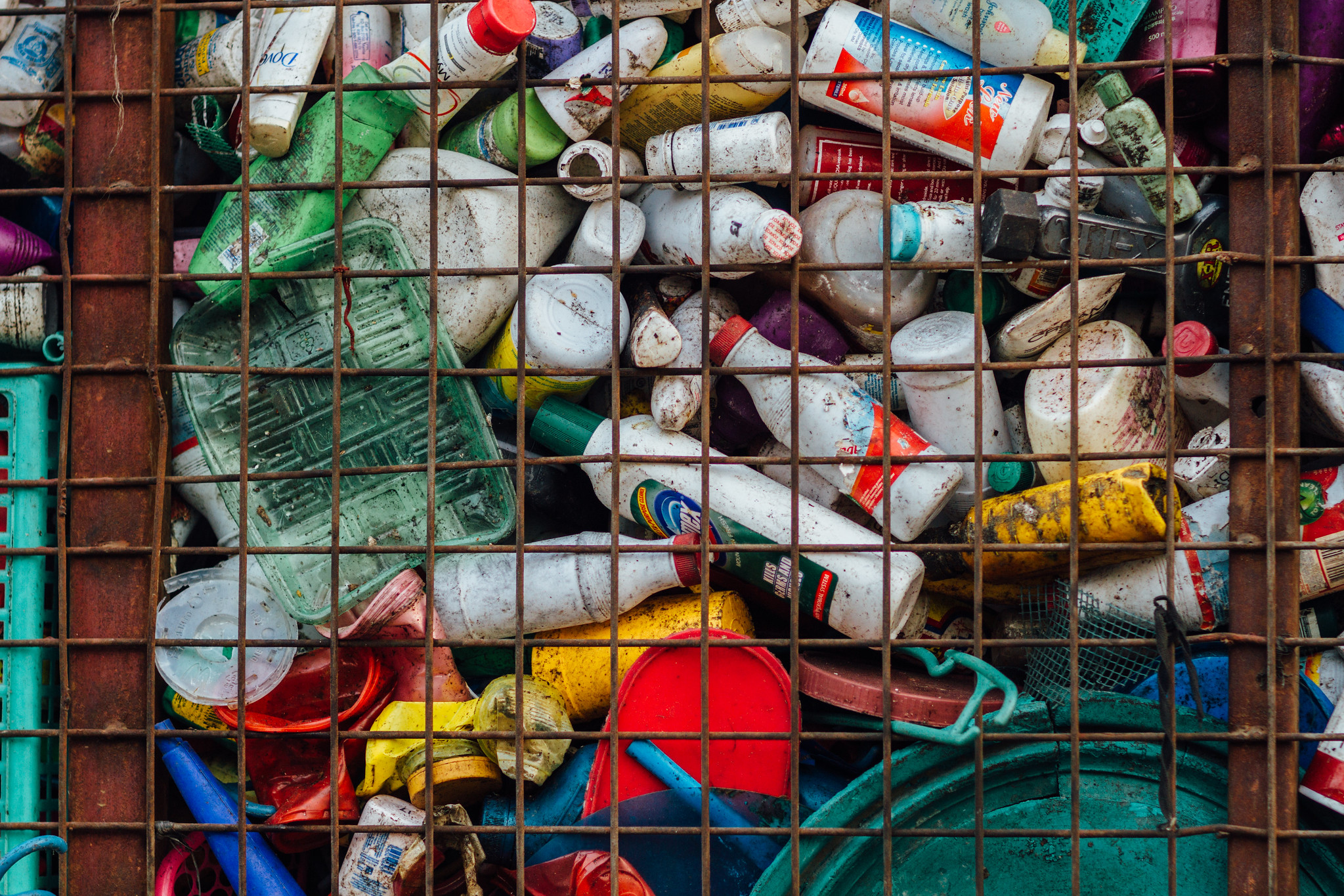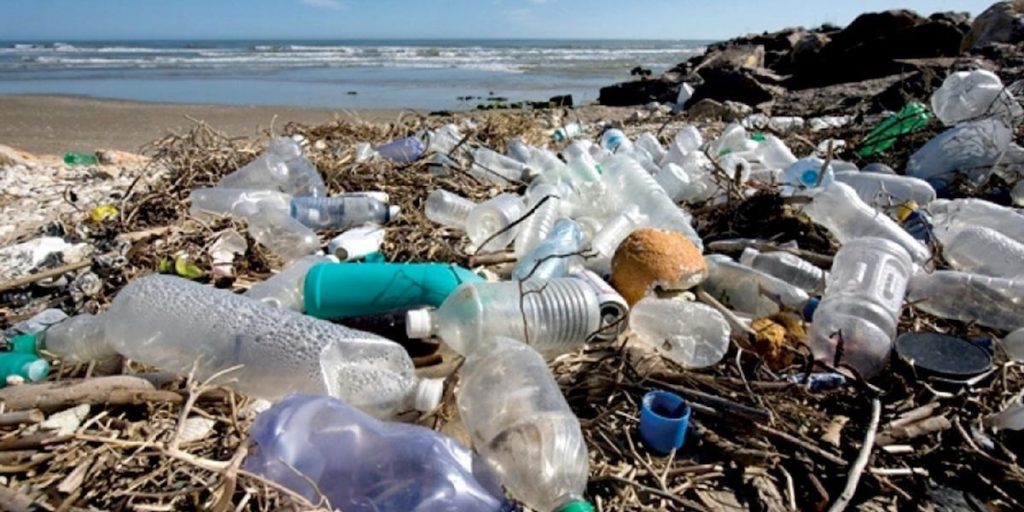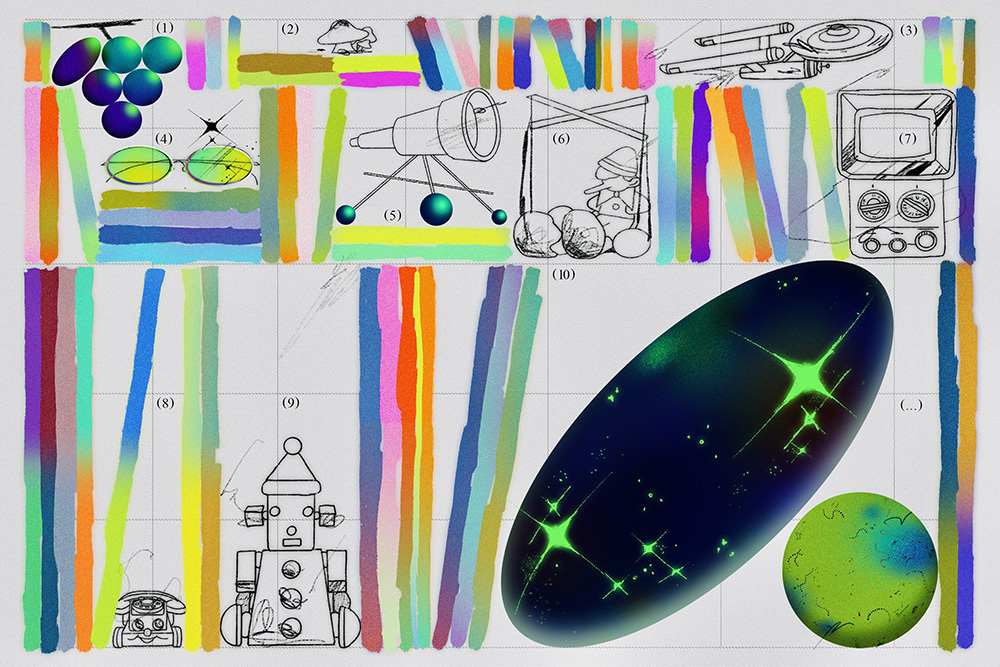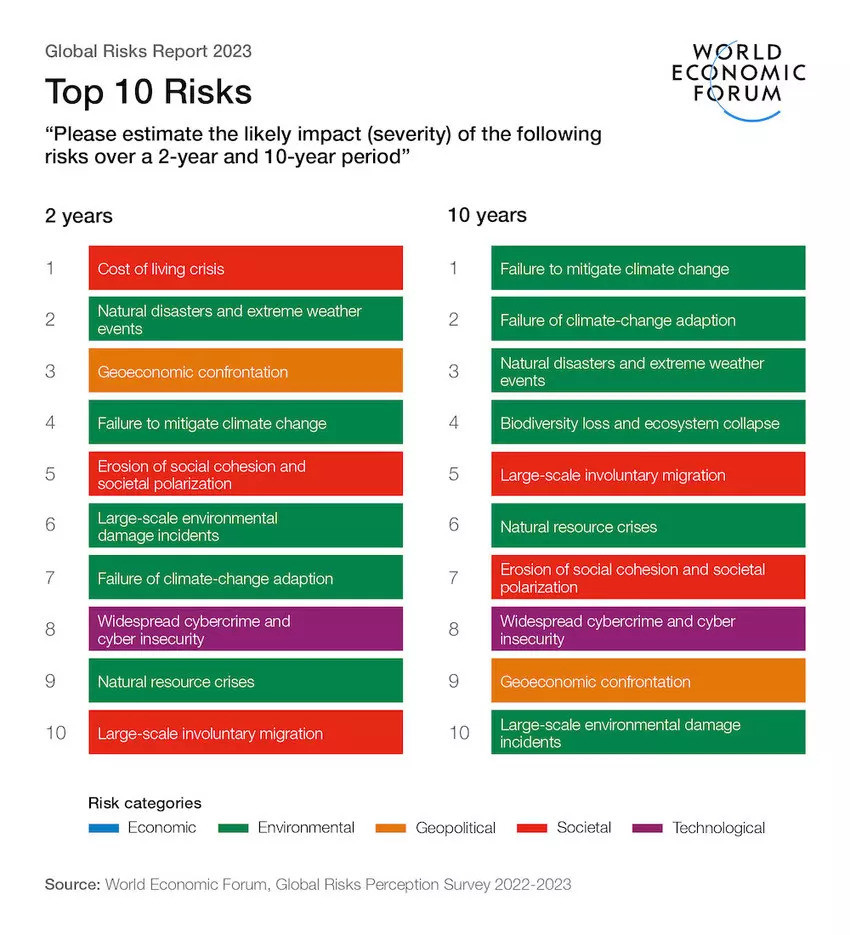
Brian Collins, J.A. Ginsburg|Opinions
April 25, 2023
Resilient Futures: The Challenge

Artwork by Nicole Cousins at COLLINS.
Note: This post is from COLLINS. COLLINS has joined with Design Observer to celebrate #DOTwenty and to support the future of design.
For the last quarter century, design thinking has framed how companies can better understand the process of design and—more to the point—its value. As a system, it served to bring design into the mainstream of global business culture, integrating it into board rooms, classrooms, even the curricula of the world’s top business schools.
But the methodology has been turned into a commodity, reducing design to a suite of skill sets and toolkits slickly packaged and sold to executives as an innovation process that almost anyone (but especially anyone with an MBA) could quickly master. Brainstorming sessions set off explosions of pastel Post-Its® plastered onto whiteboards. At the end of an exhausting session—once everyone’s ideas had been thoroughly sifted and sorted—consensus thinking would emerge triumphant, convenient and toothless, borne of the self-satisfied wisdom of the crowd in the room. No matter the complexity of the problem, no matter how it had previously challenged others, design thinking would lead to an epiphany before dinner.
Now add to the mix a blinkered “human-centered” focus, and brace for a reductionist disaster.
It ought to be obvious that the products, services, experiences, systems, environments, and organizations we design should extend capabilities, improve productivity, and/or in some other way deepen and enrich our lives. This is true whether we’re thinking about the design of a coffeemaker, a typeface, a company, a transportation network, or a new neighborhood. But when human-centered is enshrined as the primary goal, every other concern automatically gets lower priority. This species-first lens, combined with design thinking, leads to a narrow focus on the immediate problem at hand. In “solving for x,” we become oblivious to all kinds of potential collateral damage.
This misguided reasoning flies in the face of common sense. It strips out context. We—and all the products, services, and systems we create—are part of a much greater whole.
Consider, for example, the plastic bottle. It checks all the human-centric boxes: fitting comfortably in the hand, and it’s at once sanitary, cheap, light, and unbreakable. Yet the material’s near-indestructibility also presents a pervasive and noxious threat: recycling may sound wonderful, but turns out to be greenwishing. Global recycling rates are still mired in the single digits. Plastic waste has piled up everywhere, from the Mariana Trench (the deepest point on the planet) to the top of Mount Everest. Every ocean now contains massive, deadly gyres of plastic “garbage patches.” Lakes, rivers, and streams have turned murky with plastic smog filled with trillions of tiny poisonous petrochemical particles. Plastic has been found fused into rocks, with implications for the planet’s geology. Microplastics are now in everything, including us.
Human-centered, indeed.
We have been playing design whack-a-mole. Our solutions only seem to open the gates to the next suite of confounding problems. But if we keep pulling out packs of Post-Its® to groupthink our way out of this mess, we will never get out of this mess.
It simply isn’t enough to come up with better answers, although, to be fair, there are a lot of better answers. Nor is it enough to broadcast “ideas worth spreading,” although that, too, can be useful.
What we need are companies and organizations to make these better answers real answers. Now. At scale. And fast.
Resilience is the ability to bounce forward. Against a backdrop of a fast-warming planet where tipping points routinely collide, resilient companies will be the ones best able to embrace and leverage change as a constant. Our job as designers is to help companies and organizations imagine their places in the future—to understand, communicate, and create what’s possible. We need to look beyond the stakeholders of today and think about who else might be stakeholders later, two, five, even ten years from now.
But even before we think about stakeholders, we need to think about stakes.
Stakes
Everything has implications. Everything has consequences.
The internal combustion engine brought the world into a modern era of mass production, urban growth, and speedy transport. It literally paved the way for suburban sprawl, supermarkets, and traffic jams. Powered on coal, oil and gas, the Industrial Revolution released a torrent of long-sequestered fossil carbon skyward, turning the planet’s atmosphere into a heat-trapping greenhouse and knocking the climate off kilter.
That’s the context—the big picture—the stakes.
For our clients, stakes are always tied to their bottom line. Businesses that don’t turn a profit, don’t survive. Companies come to us when they’re at a crossroads, primed for change, and with the C-suite paying full attention.
For startups, this is mostly a story of good trouble. They’re seeking the right product or market fit to position themselves for funding rounds, or to prepare for an IPO. But for legacy companies, the stakes can be existential. Perhaps sales have slowed, a new technology threatens to put them out of business, or a customer base has shifted. Companies like these must articulate a revitalized vision that will resonate with their consumer base, while also delivering a renewed and unifying sense of purpose internally.
As strategists, we analyze marketplaces, size up competitive forces and look for patterns that bring a nuanced understanding of cultural and consumer shifts. This is design’s Venn overlap with marketing and advertising. And as designers, we also look ahead. With a hat tip to Octavia Butler, Walt Disney, The Jetsons and Ray Eames, we ask, “What will it be like to live in the world of tomorrow? What needs do we need to anticipate?”
These days, the answers are sobering. “Polycrisis” was this year’s “it” word at the annual meeting of the World Economic Forum. We are living in an all headline, ALL CAPS news cycle of pandemics, bank runs, homicidal weather, big lies, crop failures, mega wildfires, kinked supply chains, wars, and the blessing and curse that is AI.
Everything. Everywhere. All at once. On full blast.
The stakes, at every scale, couldn’t be higher. Or the opportunities greater.
Continue reading Resilient Futures, part two The Adjacent Possible.
Observed
View all
Observed
By Brian Collins & J.A. Ginsburg
Recent Posts
“Dear mother, I made us a seat”: a Mother’s Day tribute to the women of Iran A quieter place: Sound designer Eddie Gandelman on composing a future that allows us to hear ourselves think It’s Not Easy Bein’ Green: ‘Wicked’ spells for struggle and solidarity Making Space: Jon M. Chu on Designing Your Own Path



